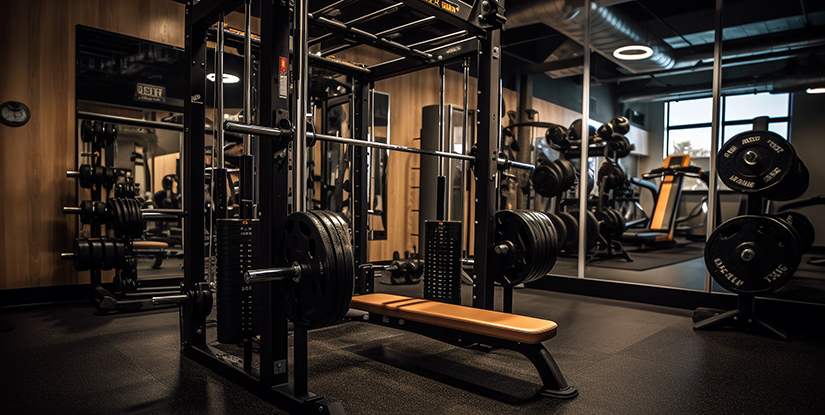Fitness Equipment Online: Professional Buying Guide & Tips

Buying Fitness Equipment Online: A Professional Guide
Investing in fitness equipment online demands informed decisions to ensure safety, longevity and value. This guide outlines the essential considerations when selecting cardio machines, strength tools, recovery devices and accessories from e-commerce platforms. It also highlights evaluation criteria, logistics, post-purchase support and practical maintenance advice to optimize performance and return on investment.
Types of Fitness Equipment Available Online
- Treadmills and elliptical trainers for cardiovascular conditioning.
- Stationary bikes, including upright, recumbent and indoor cycling models.
- Strength equipment: home gyms, racks, barbells, dumbbells and adjustable benches.
- Functional trainers, kettlebells, resistance bands and suspension trainers.
- Recovery and monitoring tools: massage guns, foam rollers and wearable trackers.
- Compact and multi-use equipment for small spaces.
Key Selection Criteria
Prioritize equipment that aligns with your fitness goals, space constraints and skill level. Assess build quality (frame material and welding), drive or resistance system (magnetic, friction, air), console features, connectivity (Bluetooth, ANT+), maximum user weight and warranty coverage. Reviews and professional certifications can validate product claims.
Evaluating Quality and Safety
Look for manufacturer compliance with safety standards and third-party testing. Examine component specifications such as steel gauge, bearing types, and motor horsepower for treadmills. Verify stability, noise levels, and fail-safes. For strength equipment, check load capacity, adjustment range and locking mechanisms. Seller transparency about materials and test results is a positive indicator.
Price, Financing and Value
Price ranges widely; distinguish cost from value by considering durability, parts availability and service options. Compare total cost of ownership: shipping, assembly, maintenance and warranty extensions. Many retailers offer financing or leasing to spread payments—evaluate interest rates and total payable amounts to ensure financial suitability.
Shipping, Assembly and Installation
Confirm shipping methods, lead times and delivery options (threshold, room-of-choice, or in-home). Heavy equipment may require professional delivery or assembly; check fees and scheduling. Keep records of delivery condition and report damage immediately. For complex installations, professional assembly ensures safety and preserves warranties.
Warranty, Returns and After-Sales Support
Thoroughly review warranty terms: frame, parts and electronics coverage differ. Understand return windows, restocking fees and who bears shipping costs for returns. Reputable suppliers offer robust after-sales support, spare parts supply and accessible customer service channels—prioritize vendors with documented service performance.
Maintenance and Longevity
Routine maintenance extends equipment life: lubrication, belt alignment, hardware tightening and software updates for smart devices. Maintain a cleaning schedule and store accessories properly. Keep a maintenance log and replace wearable parts—such as treadmill belts or brake pads—according to manufacturer recommendations.
Space Planning and Home Integration
Measure available space and plan for clearance, ventilation and flooring protection. Consider noise impact on household members and neighbors. Multi-functional equipment and foldable designs can maximize usability in compact environments. Integrating smart devices with training apps enhances engagement and tracking.
Sustainability and Disposal
Evaluate manufacturer sustainability practices and end-of-life options. Durable products with replaceable parts reduce waste. For replacements, inquire about trade-in programs or certified recycling. Responsible disposal of electronics and heavy metals preserves environmental integrity.
Buying Tips and Seller Evaluation
- Compare specifications across multiple brands and models rather than relying on price alone.
- Read verified user reviews and professional tests; pay attention to recurring issues.
- Request detailed photos, manuals and certification documents when uncertain.
- Prefer sellers with clear return policies, transparent warranties and accessible support.
- Keep receipts, serial numbers and warranty registrations in a safe place.
Frequently Asked Questions
What should I prioritize when buying a treadmill online?
Prioritize motor horsepower, belt size, cushioning, user weight capacity and warranty; verify delivery and assembly options.
How do I verify the quality of strength equipment remotely?
Review materials, steel gauge, welds, load ratings, user reviews and third-party certifications; ask for manufacturer test data.
Is it safe to buy used fitness equipment online?
Used equipment can be economical but inspect for wear, functional integrity, replacement part availability and hygienic condition before purchase.
Do smart fitness devices require subscriptions?
Some consoles and apps offer premium subscription content; evaluate core functionality versus paid features before buying.
How important is warranty coverage?
Very important—warranties protect against manufacturing defects and often indicate manufacturer confidence in product durability.
Can I assemble large equipment myself?
Many units include DIY assembly instructions, but professional assembly is recommended for heavy or complex machines to ensure safety and warranty compliance.
What maintenance tasks are essential?
Regular cleaning, lubrication, belt alignment, hardware tightening and software updates are essential to maintain performance.
How do I choose equipment for small spaces?
Opt for foldable, compact or multi-function equipment; measure clearance needs and prioritize devices with low noise and storage convenience.
Where can I find reliable post-purchase support?
Choose authorized dealers, established brands and marketplaces with documented customer service records and accessible spare-part networks.

